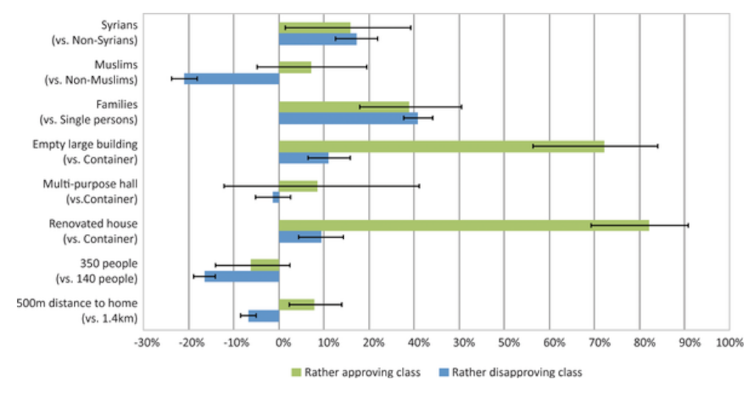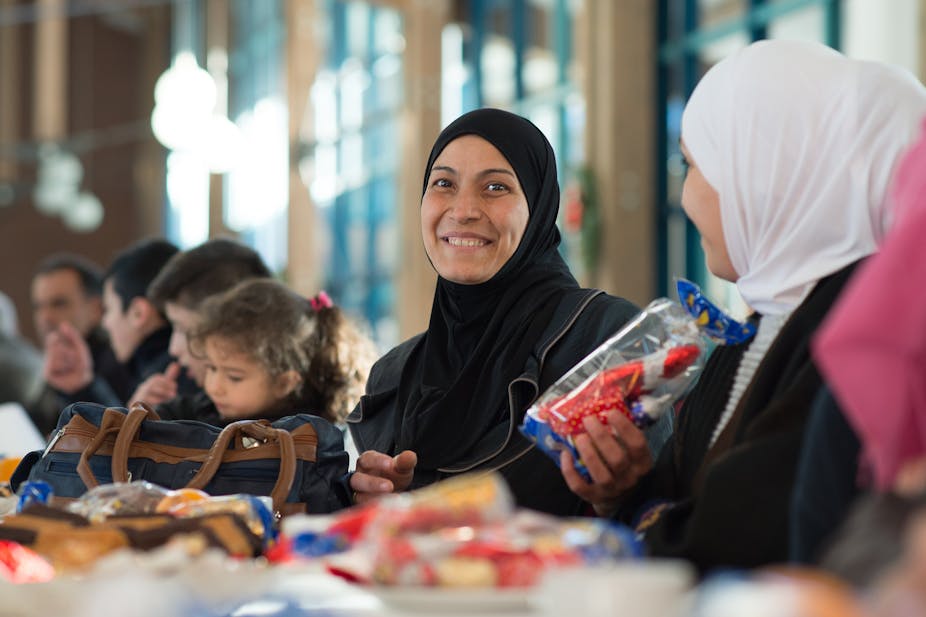German chancellor Angela Merkel’s decision in 2015 to keep her country’s borders open and give shelter to hundreds of thousands of refugees was praised by commentators and leaders around the world. Her decision was also approved of by thousands of German citizens who welcomed refugees and provided clothes, food, and other support.
The term welcome culture, or Willkommenskultur, was frequently used in political debates and the media to describe the events of autumn 2015.
But a year later, the picture had changed dramatically. By the end of 2016, the public debate had shifted to focus on the so-called refugee crisis, or Flüchtlingskrise, alongside the religion of refugees and migrants, and limits to Germany’s capacity to integrate them. The change of perspective was reflected in discussions about upper limits – Obergrenzen — of the numbers of refugees that should be allowed to enter the country.
Our recently published research suggests that welcome culture has never been as widely embedded in German society as public debates in 2015 would make us believe. But also that there was no widespread perception that Germany was undergoing a “refugee crisis” in 2016.
Three quarters of the German citizens we surveyed were initially sceptical about refugees and migrants. Yet, in line with other studies, we found most held strong humanitarian views. Despite large changes in the focus of public debates between 2015 and 2016, our research indicates that citizens’ views remained relatively stable over that period of time – and they weren’t actually all that welcoming to start with.
We initially surveyed 861 citizens across Germany in November 2015, and 418 answered the same survey questions again a year later. Our survey differs from other research using general questions on immigration because we asked respondents about a concrete situation – their preferences towards refugee homes in their vicinity. This was a realistic prospect, because homes for refugees had to be established across the country in 2015.
Participants were offered varying descriptions of refugee (and migrant) homes to be built in their vicinity, and repeatedly asked to select their preferred configurations. The scenarios differed in characteristics such as the refugee inhabitants’ main country of origin, their religion, as well as the conditions of the home and its distance from the respondents’ home.
Humanitarian views
Some differences and similarities emerged across the sample. Two groups could be distinguished in 2015, as the graph below shows. The first and smaller group – 20% of our respondents – were rather approving of refugee homes in their vicinity, while the second and larger group of 80% was rather disapproving.

Still, both groups shared strong humanitarian views. They favoured refugees from Syria, affected by the tragic war in the Middle East, over refugees from other countries such as Nigeria. They also preferred families coming to Germany rather than single people. Decent housing conditions such as empty, large buildings and renovated houses were favoured over buildings made from containers.
But the rather disapproving group preferred non-Muslim to Muslim refugees, fewer refugees living in the accommodation, and a larger distance between the refugee home and their own home. In contrast, the rather approving group did not differentiate Muslim and non-Muslim refugees, were not concerned by the number of people living in the refugee homes, and approved if the refugees were to live close to their own home.
A large majority of the sample didn’t change their views when we re-interviewed them in 2016. Only 8% of respondents became more approving of refugee homes in their vicinity, while 9% became more disapproving, in line with changes in the public debate on refugees. Recent comprehensive polls on integration in 2018 point to a similar degree of stability of views on immigration.
Survey participants who stated that there were refugee homes in their vicinity at the time of the 2016 survey, and who told us that they had been in contact with refugees, were more likely to be rather approving of refugee homes and were also more likely to retain these views. This also applies to citizens who were better educated and who had a more positive attitude towards immigrants in general.
Mismatch in debates
Contrary to what political debates and media suggest, our research shows that citizens’ views are not dominated by the origin and religion of refugees. Other issues, such sheltering refugee families rather than single people, or decent housing conditions, are more important.
And we found that German citizens were sceptical of sheltering refugees in their vicinity at the time when the country’s Willkommenskultur was being lauded worldwide. Claims about this “welcome culture” were likely to have been exaggerated. Meanwhile, subsequent focus on German people’s concerns about the “refugee crisis” might also have been overrated, because it ignored the strong humanitarian views held by the majority of citizens.
Overall, there was and still is today a mismatch between people’s views, the focus of political debates about refugees and media coverage of these issues.

